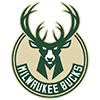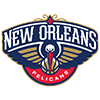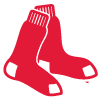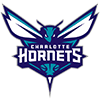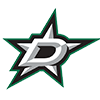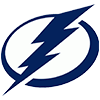"I reserve the right to change my mind." Do a search on the phrase and you'll encounter many hits but the one I vividly recall was from Bill Parcells, talking about the New York Jets' quarterback situation. Well, I reserve the right to change my mind with some of rankings in the recent second half Top 350. But you also deserve an explanation.
Some of the changes I made were oversights. I won't spend time justifying these, there were a handful of players that I intended to rank but who slipped through the cracks. I'd prefer that I didn't make mistakes, but hopefully you prefer I set the rankings as intended to maximize utility. If you've already looked at the list, the players adjusted with my previous and new ranks in parentheses are Drew Pomeranz (456, 160), Dexter Fowler (321, 224), Danny Espinosa (456, 311), Trevor Bauer (456, 241) and Daniel Mengden (456, 342).
Before we get to the list of those adjusted after reconsideration of expected performance, here's a review of the process. Once a week I update projections and generate a dollar value. The set most recent to the rankings update was used and the hitting and pitching values for 15-team mixed leagues were consolidated to one list which served as the basis.
A foundation of this nature has advantages and disadvantages. The main advantage is algorithms ignore recency bias. The primary pitfall is that sometimes recent performance changes are real and need to be accounted for
"I reserve the right to change my mind." Do a search on the phrase and you'll encounter many hits but the one I vividly recall was from Bill Parcells, talking about the New York Jets' quarterback situation. Well, I reserve the right to change my mind with some of rankings in the recent second half Top 350. But you also deserve an explanation.
Some of the changes I made were oversights. I won't spend time justifying these, there were a handful of players that I intended to rank but who slipped through the cracks. I'd prefer that I didn't make mistakes, but hopefully you prefer I set the rankings as intended to maximize utility. If you've already looked at the list, the players adjusted with my previous and new ranks in parentheses are Drew Pomeranz (456, 160), Dexter Fowler (321, 224), Danny Espinosa (456, 311), Trevor Bauer (456, 241) and Daniel Mengden (456, 342).
Before we get to the list of those adjusted after reconsideration of expected performance, here's a review of the process. Once a week I update projections and generate a dollar value. The set most recent to the rankings update was used and the hitting and pitching values for 15-team mixed leagues were consolidated to one list which served as the basis.
A foundation of this nature has advantages and disadvantages. The main advantage is algorithms ignore recency bias. The primary pitfall is that sometimes recent performance changes are real and need to be accounted for in updated rankings.
The next step is subjectively adjusting the number-driven list. Changes can be made for many reasons.
In last week's column, I explained that if we were holding a second half draft, I'd largely ignore batting average, focus on power early then find a stolen based source or two a little later. With respect to pitching, if afforded the chance to take one of the few healthy and performing studs early I'd consider it. But after that I'd fade pitching a bit, concentrating on amassing as many counting stats as possible in the first few rounds.
Players off to extreme good or poor starts were dissected in an effort to identify a new skill level that may not be properly captured objectively or some good or bad luck that may not have been regressed sufficiently. Most objective systems begin to break down at the extremes so this really isn't an issue. In fact, the problem is when the spreadsheet guru is too trusting of the numbers and isn't willing to make necessary manual tweaks, especially for outliers.
The sticks and arms were altered accordingly. The final scrub was essentially a sniff test. Using my experience in 15-team leagues, I went down the ranks, makings sure that's about where I would draft the player if we were putting together a second half league.
With that as a backdrop, here's a rather extended list of player's that were adjusted. In some cases, my colleagues were curious about some discrepancies so I reevaluated. Others were called out by you, the reader. And then there were a few I discovered while making other alterations. The numbers in parentheses are original rank, new rank and aggregate average.
Danny Valencia, 3B, Oakland Athletics (43, 73, 99): The new rank is still the most aggressive of my colleagues but up reconsideration, I would not grab Valencia at the end of the third round. On the July 6 podcast, Derek Van Riper pointed out that while Valencia's power and average looked real, his run production didn't seem worthy of that lofty rank – and upon further review, I agree. His new rank for me is end of Round 5 which passed the sniff test for me. That said, based on the aggregate ranking Valenica could be pushed to the seventh or eighth round. The take home message here is while I don't think targeting the hot Oakland corner man is a big difference maker, he could be a nice complementary piece acquired in a larger deal.
Marcell Ozuna, OF, Miami Marlins (93, 72, 59): Even after adjusting, my colleagues are still more optimistic on Ozuna. The impetus for the adjustment was straightforward. Ozuna was shorted about 20 plate appearances. He's hitting higher in the order than originally expected along with playing basically every day. Giving the Fish fly-chaser a few more trips to the dish was easy, but the bigger question was even after doing that, did he deserve another bump landing him closer to the other ranks? The bottom line is that while his better contact is captured by the engine, which helps, I don't see a repeat of high-teens power in the second half. His home run per fly ball is a career high and he's hitting more fly balls. That's three improvements (contact the third) that need to subsist for Ozuna to smack another 17 or so homers. I have him at .286 with 12 more long balls – that's still pretty good.
Jackie Bradley, OF, Boston Red Sox (155, 114, 85): This was one of the tougher original ranks as well as adjustments. I specifically recall thinking "155, that's the 11th round, seems about right." Round 11 is usually where I'm looking at my OF3 and that felt right for Bradley Jr. So why the change? The main improvement I need to incorporate in my engine is accounting for a change in hard-hit rate. JBJ is excelling in this area, with the early research suggesting this is a sustainable skill. My original prognosis was for an average in the .260 range with the new expectation in the .280 neighborhood.
Jake Lamb, 3B, Arizona Diamondbacks (177, 106, 86): Lamb's another player Derek and I discussed on the podcast. I took another look and agreed the original 177 was too late, but I can't jump him commensurate with the other guys. A 28 percent home run per fly ball rate probably going to come down. The question is to where? I guess by our respective ranks my landing point is lower than the others. A draft spot of 106 is still excellent, that's early eighth round. Like I told Derek, I'm willing to be wrong. So of course he went yard again Wednesday night.
Nick Castellanos, 3B, Detroit Tigers (131, 99, 101): This isn't a huge adjustment but it does reflect Castellanos hitting higher in the order than initially anticipated, which increases projected plate appearances as well as improving run production.
Hanley Ramirez, 1B/OF, Boston Red Sox (163, 133, 102): With Ramirez it's all about health. Well, not completely, there's some question regarding how much power manifests in the second half. The .283 with 11 homers and six steals demonstrates I'm not at all down on Ramirez, but hedging with even 20 fewer plate appearances can result in a round or two difference in ranking. I gave him a few more plate appearances but still not nearly enough to get the ranking on a par with the rest.
Billy Burns, OF, Oakland Athletics (120, 151, 213): Burns adjustment was one that I happened upon while making other fixes. Keep in mind the foundation for these rankings were based on projections run June 25. Through June 19, Burns was an everyday player. The speedy outfielder didn't play on the June 21 or 23. So at this point, it wasn't yet obvious his playing time would be seriously reduced. Since that point Burns has played every other game, which is the cause of the rankings drop. Truth be told, if Burns continues at this pace his rank will plummet much further, but there's still half a season remaining and steals are very valuable. Chances are something will happen to yield more playing time.
Matt Shoemaker, SP, Los Angeles Angels (184, 122, 143): Shoemaker is the only hurler to make the list. He's one of those extremes that breaks projection systems and I simply missed him when I scrubbed for outliers. You can't fake strikeouts and Shoemaker is getting them in bunches, fully supported by an outstanding first-pitch strike rate along with swinging-strike rate. I'm higher on him than my colleagues and would be fine if the Halos righty were my SP3 or perhaps SP2 in the right scenario.
Josh Harrison, 2B/3B/OF, Pittsburgh Pirates (70, 122, 147): Ready for the lamest excuse ever? Just keeping it real here folks and as goofy as this makes me look, Harrison was never intended to be ranked that high. He was inadvertently clicked on when adjusting others and the mistake was never flagged.
Adam Eaton, OF, Chicago White Sox (84, 125, 149): This was simply a matter of assigning Eaton too much playing time. He's a nice source of steals though which propels the player up the ranks.
Marcus Semien, SS, Oakland Athletics (244, 177, 164): Two forces are in play here, the first being recognition that Semien has been hitting second against southpaws. While that doesn't change his plate appearances that much, the further down you get in the rankings the closer the differences are, which makes even 10 trips to the dish meaningful. The other factor is I felt the engine came up shy a couple of homers. I don't see a repeat of his first half as the shortstop's HR/FB is double his career mark and should fall back, but he's hitting more fly balls so the original second half number of nine felt light.
Jonathan Schoop, 2B, Baltimore Orioles (220, 151, 123): Of all the changes, this is the one I'm most eager to follow. The reason for the original poor rank is that everything is based off preseason expectations, then adjusted for in-season performance. There's a very good chance my initial projection was way off. The specific issue is in looking at the three previous seasons, which are used to set the performance baseline, Schoop played more in his lousy 2014 so even using a weighted average that favors recent performance, the .209 he hit that season was like a brick tied to his projection, dragging it down. Perhaps it's necessary to tilt the weighted average even more towards last season's .279 mark. There's only one problem with this: 2014 happened and remember, spreadsheets exhibit no bias. Too many times I can recall manually adjusting a young player's baseline only to get burned. Admittedly, a ranking of 220 was unfair but I still lag behind my colleagues in terms of this season's rank. Like Lamb above, I'm willing to be wrong with Schoop.
OK friends, there you have it. Now it's time to let me have it. Please feel free to post questions or criticisms in the comment section and I'll pop on by and respond.







